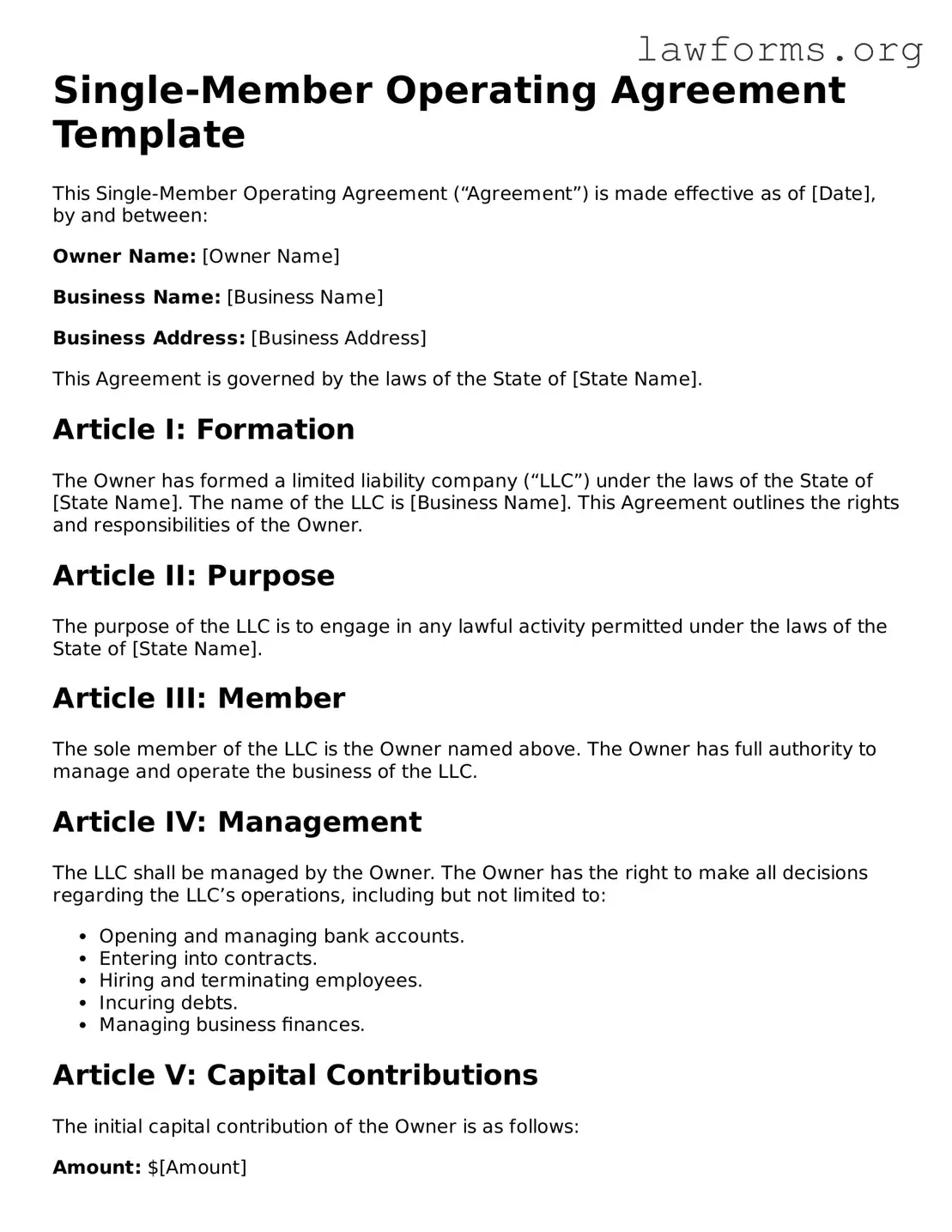Single-Member Operating Agreement Template
This Single-Member Operating Agreement (“Agreement”) is made effective as of [Date], by and between:
Owner Name: [Owner Name]
Business Name: [Business Name]
Business Address: [Business Address]
This Agreement is governed by the laws of the State of [State Name].
Article I: Formation
The Owner has formed a limited liability company (“LLC”) under the laws of the State of [State Name]. The name of the LLC is [Business Name]. This Agreement outlines the rights and responsibilities of the Owner.
Article II: Purpose
The purpose of the LLC is to engage in any lawful activity permitted under the laws of the State of [State Name].
Article III: Member
The sole member of the LLC is the Owner named above. The Owner has full authority to manage and operate the business of the LLC.
Article IV: Management
The LLC shall be managed by the Owner. The Owner has the right to make all decisions regarding the LLC’s operations, including but not limited to:
- Opening and managing bank accounts.
- Entering into contracts.
- Hiring and terminating employees.
- Incuring debts.
- Managing business finances.
Article V: Capital Contributions
The initial capital contribution of the Owner is as follows:
Amount: $[Amount]
Article VI: Profits and Losses
All profits and losses shall be allocated solely to the Owner. Distributions shall be made at the discretion of the Owner.
Article VII: Indemnification
The LLC will indemnify the Owner to the fullest extent permitted by law from any losses, liabilities, or expenses incurred in the course of the business operations.
Article VIII: Amendments
This Agreement may be amended only in writing and must be signed by the Owner.
Article IX: Miscellaneous
- This Agreement binds and benefits the Owner and their successors, representatives, and assigns.
- If any part of this Agreement is found to be invalid, the remaining sections will remain in full force.
- This Agreement constitutes the entire understanding between the Owner and the LLC.
IN WITNESS WHEREOF, the undersigned has executed this Single-Member Operating Agreement as of the day and year first above written.
Owner Signature: ___________________________
Date: _____________________
